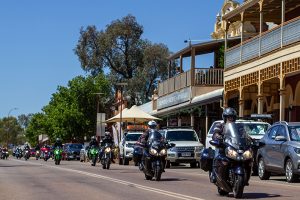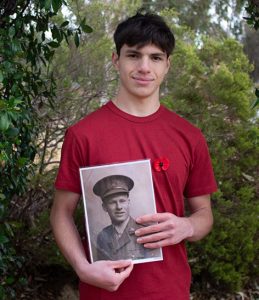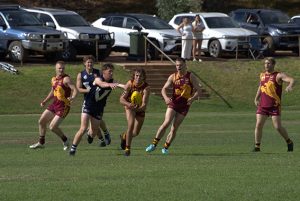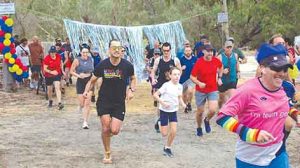THE BLACK Dog Ride ‘One-Dayer’ is an annual one-day motorcycle ride held in more than 50 communities across Australia on Sunday 17 March 2024.
The local One-Dayer is called the Avon Valley Black Dog Ride and saw 71 riders meet at the Mount Helena Tavern before departing for a leisurely meander through valley back roads.
After a brief leg stretch at the Grass Valley Tavern the two-and-a-half-hour ride finished in Toodyay – with the total ride distance being 160km.
Riders, support crew, locals and dignitaries including State Opposition Leader and local MP, Shane Love, then enjoyed an afternoon of chat and camaraderie for a lunch, cooked by Toodyay Locals Care, and post ride refreshments at the Toodyay Club.
The Avon Valley One-Dayer, after a pause for a few years, has been back and running
Black Dog One-Dayer roars through Avon Valley since 2020.

Local ride coordinator, Wes Sutton, said, “After I signed up for the One-Dayer in 2018 and discovered the Avon Valley ride wasn’t operating, I attended the Baldivis ride for a couple of years as it was the only ride out of Perth at the time.
“Recognising the need for a ride to accommodate those living in the eastern and northern suburbs, I approached Black Dog Ride and took on the role of Avon Valley coordinator.”
Read more
 OVER 400 people faced a cold morning to attend this year’s Dawn Service at Toodyay’s Anzac Memorial Park.
OVER 400 people faced a cold morning to attend this year’s Dawn Service at Toodyay’s Anzac Memorial Park.

 I WOULD like to pay tribute to my greatgrandfather, Jack Millett, who served with the 2nd/11th battalion from 1941 to 1945.
I WOULD like to pay tribute to my greatgrandfather, Jack Millett, who served with the 2nd/11th battalion from 1941 to 1945. THE SEASON opener for the Toodyay Football Club was a success with both league and reserves recording two wins from two games.
THE SEASON opener for the Toodyay Football Club was a success with both league and reserves recording two wins from two games. AT LAST month’s council meeting elected members voted on adopting the Shire of Toodyay Cat Local Law 2024. The officer’s recommendation was that council adopt the law the purpose of which is to improve the permit conditions, definitions of nuisance behaviour, modification of penalties, and to continue to provide the Shire of Toodyay with measures in addition to those under the Cat Act 2011 to control the keeping of cats.
AT LAST month’s council meeting elected members voted on adopting the Shire of Toodyay Cat Local Law 2024. The officer’s recommendation was that council adopt the law the purpose of which is to improve the permit conditions, definitions of nuisance behaviour, modification of penalties, and to continue to provide the Shire of Toodyay with measures in addition to those under the Cat Act 2011 to control the keeping of cats.
